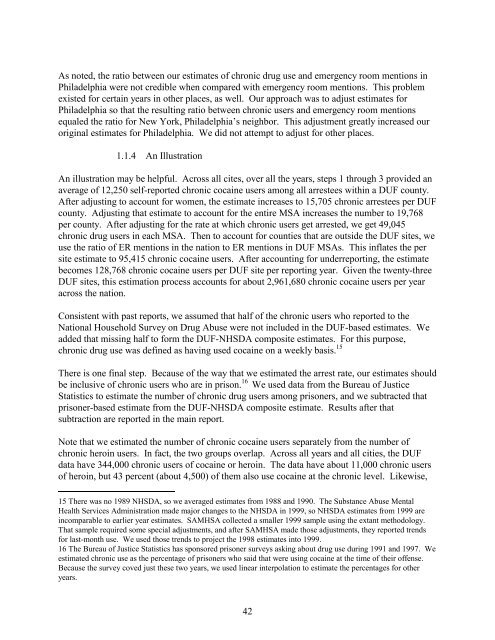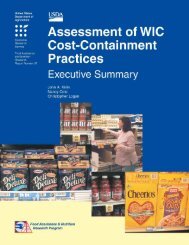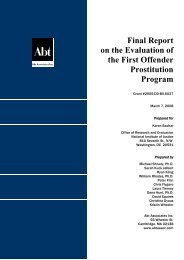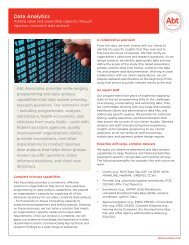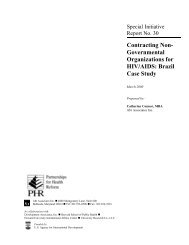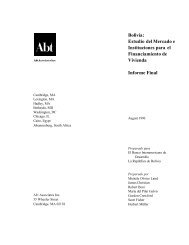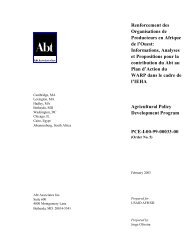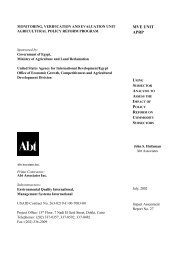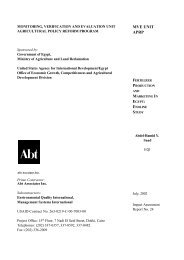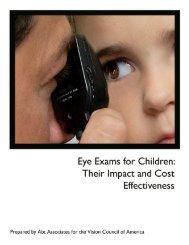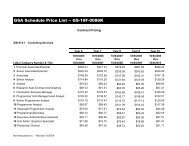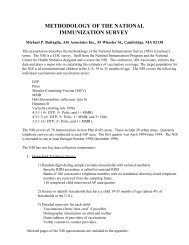What America's Users Spend on Illegal Drugs 1988-2000 - National ...
What America's Users Spend on Illegal Drugs 1988-2000 - National ...
What America's Users Spend on Illegal Drugs 1988-2000 - National ...
- No tags were found...
You also want an ePaper? Increase the reach of your titles
YUMPU automatically turns print PDFs into web optimized ePapers that Google loves.
As noted, the ratio between our estimates of chr<strong>on</strong>ic drug use and emergency room menti<strong>on</strong>s inPhiladelphia were not credible when compared with emergency room menti<strong>on</strong>s. This problemexisted for certain years in other places, as well. Our approach was to adjust estimates forPhiladelphia so that the resulting ratio between chr<strong>on</strong>ic users and emergency room menti<strong>on</strong>sequaled the ratio for New York, Philadelphia’s neighbor. This adjustment greatly increased ouroriginal estimates for Philadelphia. We did not attempt to adjust for other places.1.1.4 An Illustrati<strong>on</strong>An illustrati<strong>on</strong> may be helpful. Across all cites, over all the years, steps 1 through 3 provided anaverage of 12,250 self-reported chr<strong>on</strong>ic cocaine users am<strong>on</strong>g all arrestees within a DUF county.After adjusting to account for women, the estimate increases to 15,705 chr<strong>on</strong>ic arrestees per DUFcounty. Adjusting that estimate to account for the entire MSA increases the number to 19,768per county. After adjusting for the rate at which chr<strong>on</strong>ic users get arrested, we get 49,045chr<strong>on</strong>ic drug users in each MSA. Then to account for counties that are outside the DUF sites, weuse the ratio of ER menti<strong>on</strong>s in the nati<strong>on</strong> to ER menti<strong>on</strong>s in DUF MSAs. This inflates the persite estimate to 95,415 chr<strong>on</strong>ic cocaine users. After accounting for underreporting, the estimatebecomes 128,768 chr<strong>on</strong>ic cocaine users per DUF site per reporting year. Given the twenty-threeDUF sites, this estimati<strong>on</strong> process accounts for about 2,961,680 chr<strong>on</strong>ic cocaine users per yearacross the nati<strong>on</strong>.C<strong>on</strong>sistent with past reports, we assumed that half of the chr<strong>on</strong>ic users who reported to theNati<strong>on</strong>al Household Survey <strong>on</strong> Drug Abuse were not included in the DUF-based estimates. Weadded that missing half to form the DUF-NHSDA composite estimates. For this purpose,chr<strong>on</strong>ic drug use was defined as having used cocaine <strong>on</strong> a weekly basis. 15There is <strong>on</strong>e final step. Because of the way that we estimated the arrest rate, our estimates shouldbe inclusive of chr<strong>on</strong>ic users who are in pris<strong>on</strong>. 16 We used data from the Bureau of JusticeStatistics to estimate the number of chr<strong>on</strong>ic drug users am<strong>on</strong>g pris<strong>on</strong>ers, and we subtracted thatpris<strong>on</strong>er-based estimate from the DUF-NHSDA composite estimate. Results after thatsubtracti<strong>on</strong> are reported in the main report.Note that we estimated the number of chr<strong>on</strong>ic cocaine users separately from the number ofchr<strong>on</strong>ic heroin users. In fact, the two groups overlap. Across all years and all cities, the DUFdata have 344,000 chr<strong>on</strong>ic users of cocaine or heroin. The data have about 11,000 chr<strong>on</strong>ic usersof heroin, but 43 percent (about 4,500) of them also use cocaine at the chr<strong>on</strong>ic level. Likewise,15 There was no 1989 NHSDA, so we averaged estimates from <strong>1988</strong> and 1990. The Substance Abuse MentalHealth Services Administrati<strong>on</strong> made major changes to the NHSDA in 1999, so NHSDA estimates from 1999 areincomparable to earlier year estimates. SAMHSA collected a smaller 1999 sample using the extant methodology.That sample required some special adjustments, and after SAMHSA made those adjustments, they reported trendsfor last-m<strong>on</strong>th use. We used those trends to project the 1998 estimates into 1999.16 The Bureau of Justice Statistics has sp<strong>on</strong>sored pris<strong>on</strong>er surveys asking about drug use during 1991 and 1997. Weestimated chr<strong>on</strong>ic use as the percentage of pris<strong>on</strong>ers who said that were using cocaine at the time of their offense.Because the survey coved just these two years, we used linear interpolati<strong>on</strong> to estimate the percentages for otheryears.42


